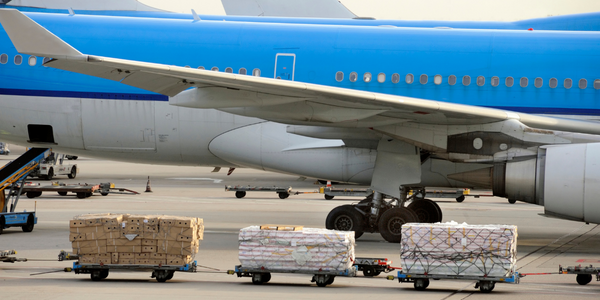Technology Category
- Analytics & Modeling - Real Time Analytics
- Cybersecurity & Privacy - Network Security
Applicable Industries
- Glass
- National Security & Defense
Use Cases
- Cybersecurity
- Tamper Detection
Services
- Cybersecurity Services
About The Customer
Stefanini is a global IT solutions provider that relies on innovative technology, strong partnerships, and highly trained IT professionals to provide clients with revolutionary solutions that enhance competitiveness. The company maintains partnerships with medium-to-large enterprises around the world, providing them with innovative solutions and support. Stefanini generates up to 1 Gbps of data entering the company’s network from diverse traffic streams that access web servers and databases. The company needed to protect its own intellectual property, as well as clients’ data, and chose Check Point for this purpose.
The Challenge
Stefanini, a provider of a broad portfolio of IT solutions, faced significant challenges in protecting its intellectual property and client data from cyber threats. The company's brand reputation was at stake, and it needed to improve its security management efficiency. Stefanini maintains partnerships with medium-to-large enterprises worldwide, generating up to 1 Gbps of data entering the company’s network. Diverse traffic streams enter the network to access web servers and databases, making it a potential target for zero-day or other cyberattacks. If these attacks successfully breach the network, both client and Stefanini assets are at risk.
The Solution
To defend against next-generation threats, Stefanini deployed Check Point 15600 and 23000 Firewalls for advanced firewall protection. These firewalls protect the network perimeter and internal networks, enabling Stefanini to detect and control application usage. This allows partners to access the capabilities they need while maintaining network safety. Advanced identity awareness gives the team flexibility to create granular policy definitions per user, device, and group. Stefanini also implemented Check Point R80 Security Management for centralized control of all security gateways. This solution provides threat prevention, full threat visibility, and in-depth control in a single pane of glass. The team can easily segment policy to align with partner requirements or network functions and see everything in a unified console.
Operational Impact
Quantitative Benefit

Case Study missing?
Start adding your own!
Register with your work email and create a new case study profile for your business.
Related Case Studies.

Case Study
Data Capture for Afghanistan Forces
Electronic equipments on the field of Afghanistan provided information on the status of the vehicle and to identify potential threats surrounding it to the British Force. The monitoring and interpretation of this data requires robust and sophisticated digitization for data capture and communication.
.png)
Case Study
Discrete Manufacturing Industries (Fiberglass Pipe)
The implementation of ERP software in a Discrete Manufacturing organization needs to be strategic, irrespective of its size and capacity. The client had already implemented an ERP system which fulfilled their requirements but was not efficient enough. Efficiency here meant Synchronized Planning, Updating and Multisite Planning. Planning at client’s place was done outside the ERP system. Lack of proper synchronization to the ERP system paved way to huge delays in the changes getting updated in the system. These delays caused disruption in achieving delivery schedules. Multisite Planning is a solution to an organization which has multiple production units (may or may not be geographically separated) and thus needs planning across these units to synchronize production activities within them. The client also has multiple factories and hence Production Planning control is very essential in their case. Since Multisite planning was not possible with Baan ERP system, this was another bottleneck for the client.

Case Study
Major Aerospace Company Automates Asset Management
The O&M division of an aerospace and global security company was using spreadsheets to manually track more than 3,000 assets assigned to students and staff. Maintaining audit trails for this high volume of equipment became increasingly time-consuming and challenging. The chore involved knowing precisely what equipment was on hand, what had been issued, its location and the name of the custodial owner of each item. Every aspect of this task was carried owner of each item. Every aspect of this task was carried out by individuals with spreadsheets. Manually documenting the full lifecycle of each asset added to the burden. This included tracking maintenance requirements and records, incidents and damages, repairs, calibrations, depreciation, and end-of-life data.

Case Study
Securing a Large Data Center in the EMEA Region: An IoT Case Study
A leading data-center operator in the EMEA region, with multiple facilities spanning over 25,000 square meters, faced significant security challenges. The operator experienced interruptions in their internal IT network due to unsupervised work of third-party technicians. Despite having a high-end building control system that provided 24x7 monitoring and control to all the building’s infrastructure, the data center was vulnerable from a cyber perspective as it was connected to the IT network infrastructure. The operator launched an urgent OT cyber security project that included both IT-OT network segmentation and OT network asset mapping and anomaly detection. The main objectives were to harden the security of the server systems, secure the facility’s power supply and server cooling system, strengthen the segmentation between building and operational systems, create a visual OT network map, and set up a system for presenting supply-chain attacks that may threaten the data center through equipment vendors’ maintenance activities.

Case Study
Enhancing Security Precision with IoT: A Case Study of Guardsman Group
Guardsman Group, a leading security company in the Caribbean, faced a significant challenge in maintaining the security of its digital infrastructure. The company provides security equipment, personnel, and systems for various businesses across the region. However, one of its offices experienced a security incident that affected all communications at that location. The existing security tools were not sufficient to provide the necessary protection, and it took hours to identify the source of the issue. This incident highlighted the need for a dynamic solution that could proactively identify threats. The company's primary concern was any disruption to its business, as it manages a significant portion of Jamaica's money and cannot afford for its operations to go down.

Case Study
Asia Airfreight Terminal Enhances Operational Efficiency with CommScope's RUCKUS Solutions
Asia Airfreight Terminal (AAT), a leading cargo handling company based out of Hong Kong International Airport, was facing challenges with its Wi-Fi network, which was critical for the functioning of its automated Material Handling System (MHS) within the warehouse. Any interference or lost signals could directly impact their operational efficiency. AAT also had separate networks for their office and CCTV cameras, which made the job of their data center challenging. The company was in search of a Wi-Fi network configuration that could streamline their networks and reduce its network management workload. AAT was already running on equipment from a competing vendor, and the new solution needed to prove its worth in scalability and reliability.



